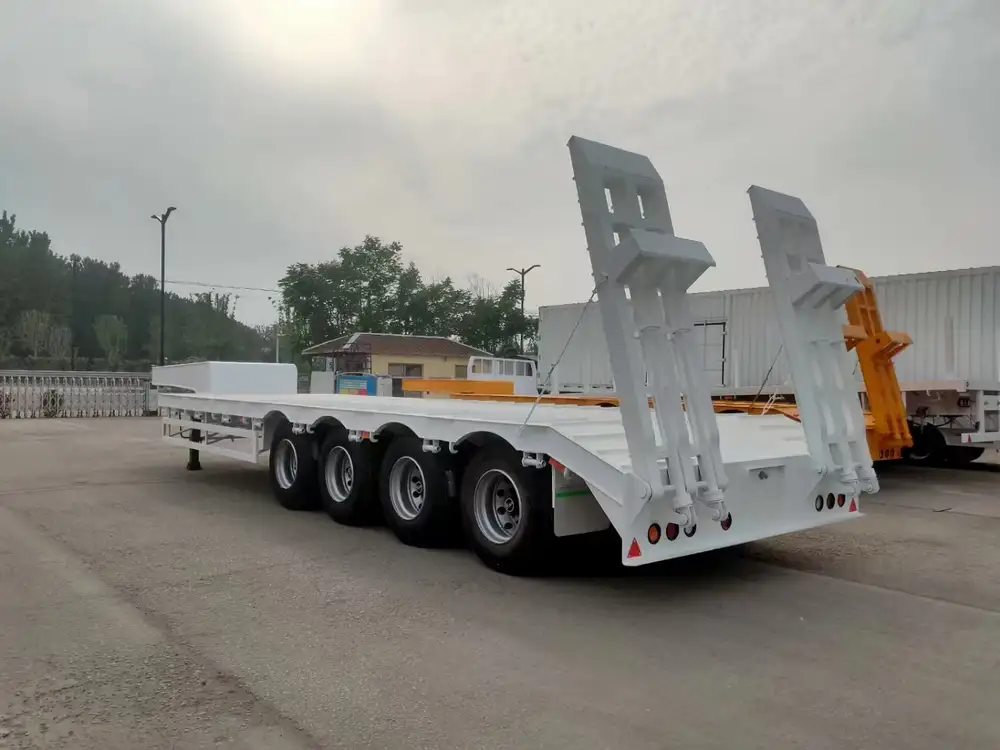Transportation of cattle requires meticulous planning, especially when it comes to understanding the capacity of semi-trailers. Given the nuances involved, ranging from state regulations to the ethical treatment of animals, we delve into various components that illuminate this pivotal aspect of livestock hauling.
Understanding Semi Trailer Configurations
Types of Semi Trailers Used for Cattle Transport
Gooseneck Trailers:
- Description: These trailers have a coupling that attaches directly to the truck’s bed, allowing for greater maneuverability and stability.
- Capacity: Typically, they can carry 5-10 head of cattle, depending on size.
Flatbed Trailers:
- Description: They offer an open design, facilitating easy loading and unloading.
- Capacity: Depending on arrangements, they can accommodate around 12-20 cattle.
Livestock Trailers:
- Description: Specifically designed for animal transport, these trailers are equipped with ventilation, adequate flooring, and spacious compartments.
- Capacity: On average, a livestock trailer can carry 20-25 cattle, but this varies based on size and breed.

Dimensions of Standard Semi Trailers
| Type | Length | Width | Height | Typical Capacity (Cattle) |
|---|---|---|---|---|
| Standard Deck | 53 ft | 8.5 ft | 13.6 ft | 20-25 |
| Drop Deck | 48 ft | 8.5 ft | 13.6 ft | 15-22 |
| Step Deck | 48 ft | 8.5 ft | 11.5 ft | 12-20 |
Factors Affecting Cattle Capacity
Size and Breed: The breed and average size of the cattle significantly impact capacity. For example, standard-sized cattle might allow more head per trailer compared to larger breeds such as Holsteins.
Weight Limitations: Semi trailers typically have a maximum weight limit, often around 80,000 pounds in the U.S. This limit includes the weight of the trailer, the truck, and the cattle.
Regulatory Compliance: Each state has specific regulations regarding livestock transport. For instance, some states mandate certain space allowances per animal to ensure their comfort and safety during transportation.
Comfort and Welfare Standards: To avoid overcrowding and ensure adequate space, ethical transport practices recommend a minimum space allowance per cow. Suggestions often cite around 10-12 square feet per larger breed in a livestock trailer.
Calculating Cattle Capacity

Step-by-Step Calculation
Determine the Trailer Type: Is it a gooseneck, flatbed, or livestock trailer? Each type has different capacities.
Assess the Size of the Cattle: Use average weights and sizes for the specific breed.
- Example: An average adult cow might weigh between 1,200 to 2,400 pounds.
Calculate the Total Weight Capacity:
- Example Calculation for a Standard Livestock Trailer:
- Max weight capacity (80,000 lbs) – (Trailer weight + Truck weight) = Available weight for cattle.
- If the trailer and truck weigh approximately 30,000 lbs combined, then 50,000 lbs is available for cattle.
- At an average weight of 1,500 lbs per cow, you could transport roughly 33 cows. However, this number will be less due to space requirements.
- Example Calculation for a Standard Livestock Trailer:
Space Considerations
- Space Calculation: Using an example space allocation:
- If allocating 10 square feet per head:
- A trailer with 250 square feet could accommodate 25 cows.
Optimal Calculations by Breed
| Breed Type | Average Weight (lbs) | Space Requirement per Cow (sq. ft.) | Max Cattle per Trailer |
|---|---|---|---|
| Hereford | 1,200 | 10 | 25 |
| Angus | 1,600 | 12 | 20 |
| Holstein | 1,800 | 15 | 16 |
| Beefmaster | 1,500 | 10 | 25 |

Common Transportation Questions
How Long Can Cattle Be Transported?
Transport duration should ideally not exceed 28 hours to prevent stress and ensure animal welfare, depending on federal and state guidelines. Adequate rests and feeding breaks should be planned along the route.
What Are the Legal Requirements for Cattle Transport?
- Documentation: Ensure you have the required health certificates and brands.
- Animal Welfare Regulations: Compliance with the Animal Welfare Act is crucial. This includes adequate space, ventilation, and water access.

How to Ensure Adequate Ventilation and Safety
- Ventilation: Cattle require proper airflow to maintain comfort. Trailers should have side openings for optimum air movement.
- Flooring: Non-slip floors are critical to ensuring animals keep their footing during transit.
Dealing with Emergencies During Transit
- Pre-trip Inspection: Regular checks to ensure trailer integrity (tires, brakes, and overall condition).
- Emergency Kit: Stock essential items, including halters, ropes, and first-aid supplies for cattle.
- Communication: Stay connected to relevant authorities, especially during long-haul transport, for assistance in emergencies.
Conclusion: Maximizing Efficiency in Cattle Transport
Understanding how many cattle fit on a semi-trailer encompasses various dimensions, from trailer types and dimensions to regulatory compliance and ethical considerations. The meticulous calculation of capacity not only hinges on the trailer type but equally on the size of the cattle and their welfare.
With evolving regulations and standards surrounding the transportation of livestock, as manufacturers of semi-trailers, we must lead the charge toward safer and more efficient transport solutions. This involves designing trailers that not only meet capacity needs but also prioritize the comfort and safety of the cattle.
By staying informed and implementing best practices, we pave the way for better livestock transport and contribute to the overall welfare of the animals we are tasked to transport.
This comprehensive understanding equips ranchers and transporters alike with the knowledge they require, enhancing profitability while addressing the vital area of livestock welfare. By choosing the right semi-trailer and adhering to transport guidelines, the cattle industry can thrive responsibly.



